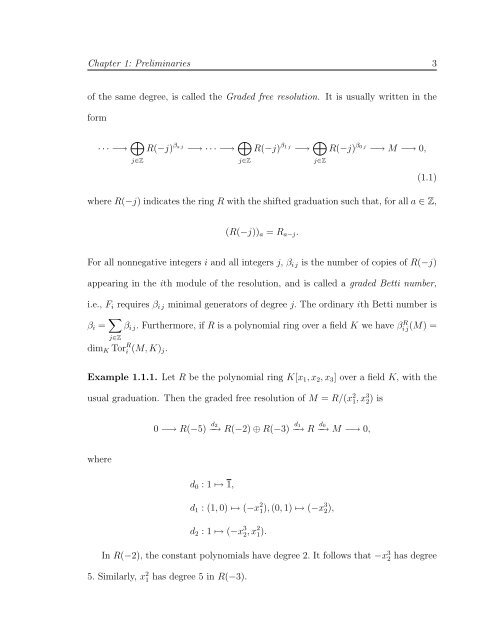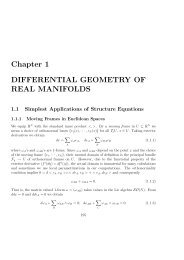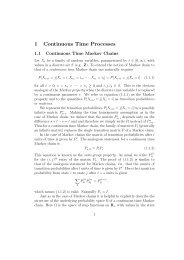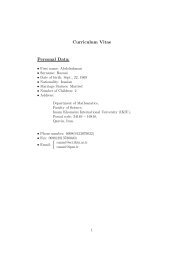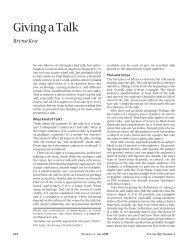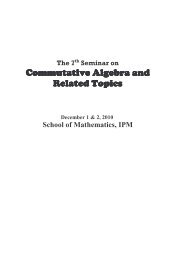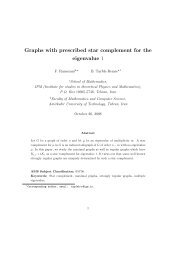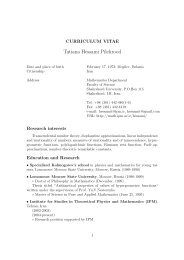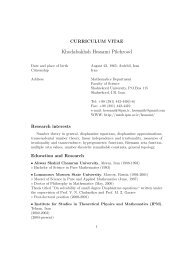Betti numbers of modules over Noetherian rings with ... - IPM
Betti numbers of modules over Noetherian rings with ... - IPM
Betti numbers of modules over Noetherian rings with ... - IPM
Create successful ePaper yourself
Turn your PDF publications into a flip-book with our unique Google optimized e-Paper software.
Chapter 1: Preliminaries 3<br />
<strong>of</strong> the same degree, is called the Graded free resolution. It is usually written in the<br />
form<br />
· · · −→ <br />
R(−j) βs<br />
<br />
j −→ · · · −→ R(−j) β1<br />
<br />
j −→<br />
j∈Z<br />
j∈Z<br />
j∈Z<br />
R(−j) β0 j −→ M −→ 0,<br />
(1.1)<br />
where R(−j) indicates the ring R <strong>with</strong> the shifted graduation such that, for all a ∈ Z,<br />
(R(−j))a = Ra−j.<br />
For all nonnegative integers i and all integers j, βi j is the number <strong>of</strong> copies <strong>of</strong> R(−j)<br />
appearing in the ith module <strong>of</strong> the resolution, and is called a graded <strong>Betti</strong> number,<br />
i.e., Fi requires βi j minimal generators <strong>of</strong> degree j. The ordinary ith <strong>Betti</strong> number is<br />
βi = <br />
βi j. Furthermore, if R is a polynomial ring <strong>over</strong> a field K we have βR i j(M) =<br />
j∈Z<br />
dimK Tor R i (M, K)j.<br />
Example 1.1.1. Let R be the polynomial ring K[x1, x2, x3] <strong>over</strong> a field K, <strong>with</strong> the<br />
usual graduation. Then the graded free resolution <strong>of</strong> M = R/(x 2 1, x 3 2) is<br />
where<br />
0 −→ R(−5) d2<br />
d1 d0<br />
−→ R(−2) ⊕ R(−3) −→ R −→ M −→ 0,<br />
d0 : 1 ↦→ 1,<br />
d1 : (1, 0) ↦→ (−x 2 1), (0, 1) ↦→ (−x 3 2),<br />
d2 : 1 ↦→ (−x 3 2, x 2 1).<br />
In R(−2), the constant polynomials have degree 2. It follows that −x 3 2 has degree<br />
5. Similarly, x 2 1 has degree 5 in R(−3).


